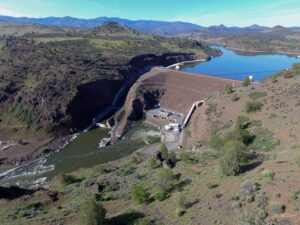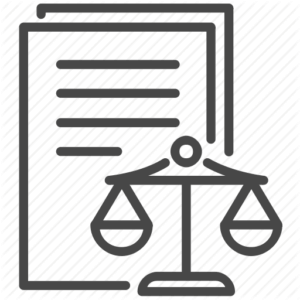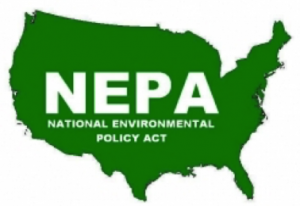The Klamath Dam Removals: A Story of People and Possibility

Free flowing Klamath River, California | Swiftwater Films, Shane Anderson
As I stood on a bridge and looked upstream along the Klamath River, I felt confused. For over 15 years, I had stood in the same stop and gazed on the earthen face of Iron Gate Dam. But on this day, I saw…space. Framing the edges of that space, I saw canyon walls, river bed, floodplains and terraces, and miles of vista.
I lost my dad last year, so I understand having the experience of noticing the absence of someone who had been monumental in my life – both physically and metaphorically. I understand the confusion that results from seeing a space where he used to be and being keenly aware of his absence. I noticed the absence of Iron Gate Dam in the same way – the loss of something that had been monumental in my life and in the lives of thousands of others. But unlike the absence of my dad, seeing the absence of Iron Gate Dam stirred feelings of wonder, joy, hope, and gratitude.
Undammed: The Klamath River Story
The history of water in the West has been shaped by conflict, greed, and scarcity, but in a remote pocket of Southern Oregon and Northern California, a different Western water story is taking shape. The largest dam removal in history is on the verge of completion on the Klamath River. This moment is the result of a historic decades-long Tribally-led campaign to free the Klamath River and restore salmon and steelhead populations, which are core to Native traditions and foodways. This is undoubtedly a huge triumph.
The first episode of this in-depth podcast dives into the past, present, and future of the world’s largest dam removal project and features Dr. Ann Willis, American Rivers’ California Regional Director.
We live in a world where we are experiencing seemingly insurmountable crises that threaten our way of life every day: human-caused climate change, biodiversity loss, and racial injustice. While we know people are causing these crises, it feels harder to believe that people can similarly act to solve these crises. The solutions feel too big and too complicated to achieve given the deep differences we perceive in one another.
But if there’s one thing I’ve learned in my time working in the Klamath, it’s that no matter what my preconception of others have been, we all share a core of humanity. When we come together and name the feelings and values we share, rather than categorizing our differences, we can accomplish amazing feats.
With the cofferdam gone at Iron Gate, we are part of a historic shift in how we exist with the Klamath River flows freely from Lake Ewauna to the Pacific Ocean. The Klamath River dam removals mark an inflection point from the past century, when the river was dominated by people who saw it as a catalogue of resources to be extracted and exported, to a new chapter where we more fully embrace a lesson from deep time: rivers have value in on of themselves, not just for the environment or fish, but for people, too. This is the moment where we give ourselves over to the belief that nature is a better steward of life than we are, where natural processes can take the helm.

Iron Gate Dam, pre-removal. Photo: Jefferson Public Radio

Iron Gate Dam close to removal. Photo: Finance & Commerce
For those of us who are nervous or afraid about following nature’s lead, consider that there are people who can guide us through this transformation in how we exist with a river. We often talk about people living in tension with or opposition to nature, but there has been a long history of life lived in alignment with nature that stretches back to time immemorial. Recognizing this goes beyond simply acknowledging the sovereignty and rights of Tribes; it means we might also begin to see how dam removal isn’t just a revitalization a river, but of traditions and ways of life that were demolished when these dams were constructed. The Tribes of the watershed and their relationship with the Klamath are truly the origin point of the movement to heal, and the most committed advocates for the river’s recovery. Working together has been an opportunity to learn about and begin the process of addressing historic injustices to heal our relationships with each other, our histories, and the heritages and traditions that give our lives meaning.
With the removal of the final cofferdam and the dawning of the Klamath River’s revitalization, I have learned more than the power of collaboration. I have learned about the power of now: we don’t need to wait for generations to celebrate incredible milestones of success. We can celebrate all we can save right now. We can remove dams without displacing people. We can do it on time and on budget while undertaking critical work that sits in alignment with the needs of the environment. This incredible effort has created a much-needed precedent and expanded the vision for what successful dam removal can be.
Most dam removals will not share the scale of the Klamath. Most dam removals are small, but their cumulative impact is immense. No one project will solve all of our overlapping crises, but everyone has a role to play in the solution. I feel hopeful knowing that even though there’s still much to do, a lot has been accomplished. As we move into a future where more dams become obsolete, we can reflect on the success of the Klamath River and its people as a guide for how to move forward together.
The post The Klamath Dam Removals: A Story of People and Possibility appeared first on American Rivers.



